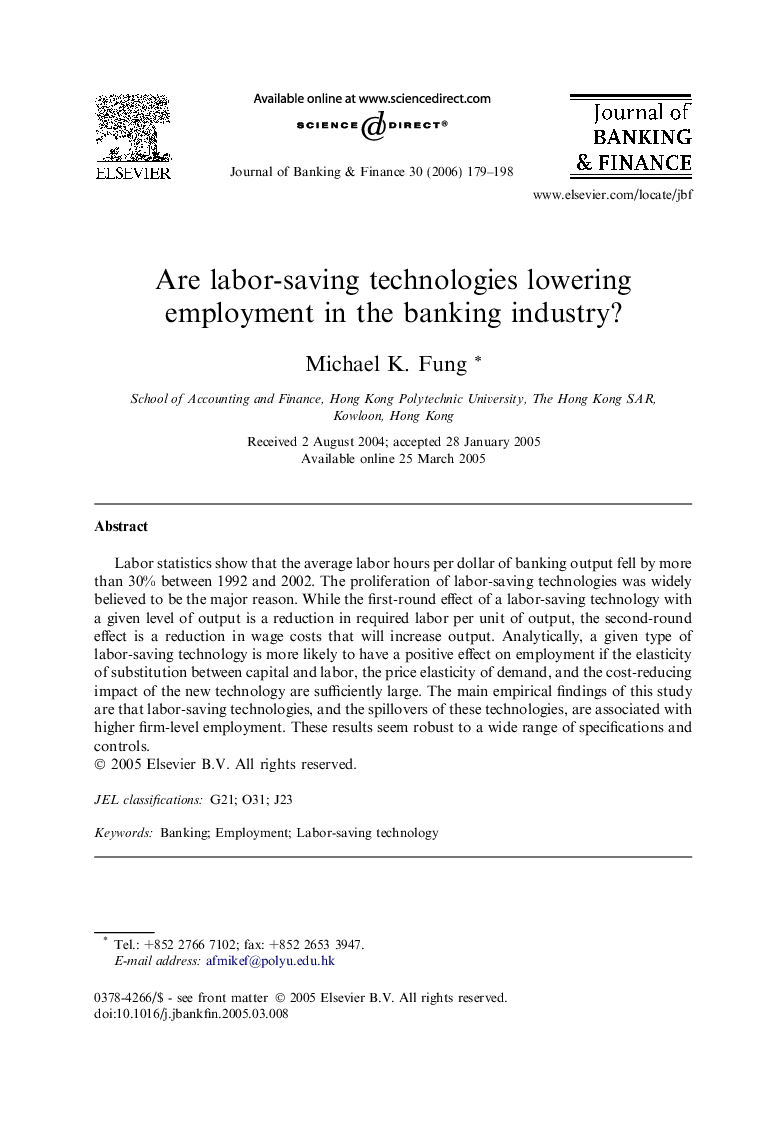| Article ID | Journal | Published Year | Pages | File Type |
|---|---|---|---|---|
| 5091639 | Journal of Banking & Finance | 2006 | 20 Pages |
Abstract
Labor statistics show that the average labor hours per dollar of banking output fell by more than 30% between 1992 and 2002. The proliferation of labor-saving technologies was widely believed to be the major reason. While the first-round effect of a labor-saving technology with a given level of output is a reduction in required labor per unit of output, the second-round effect is a reduction in wage costs that will increase output. Analytically, a given type of labor-saving technology is more likely to have a positive effect on employment if the elasticity of substitution between capital and labor, the price elasticity of demand, and the cost-reducing impact of the new technology are sufficiently large. The main empirical findings of this study are that labor-saving technologies, and the spillovers of these technologies, are associated with higher firm-level employment. These results seem robust to a wide range of specifications and controls.
Keywords
Related Topics
Social Sciences and Humanities
Economics, Econometrics and Finance
Economics and Econometrics
Authors
Michael K. Fung,
